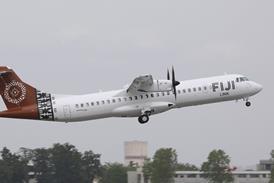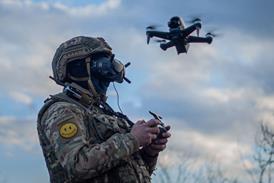Officials from the FAA and Inspector General's (IG) office in the US Department of Transport have yet to resolve a majority of recommendations issued by the IG in its latest review of the FAA-managed Air Transportation Oversight System (ATOS).
ATOS was introduced 12 years ago to use data-driven and risk-based methods in oversight of air carrier operations. But FAA inspectors have encountered problems in using ATOS, which has led to inconsistent inspections methods, according to risk identified in ATOS by the IG in 2002.
After Southwest's high-profile incidences of missed aircraft inspections required under airworthiness directives that surfaced in 2008, the carrier in its $7.5 million settlement with FAA agreed to undertake significant changes in its ATOS programme.
Part of the fallout from the missed inspections at Southwest was a request by members of the US Congress for IG to conduct another review of ATOS.
In its latest assessment the IG concludes required inspections under ATOS were not completed in a timely manner and that some FAA inspectors did not effectively assess whether critical maintenance systems at air carriers were performing as intended.
IG issued seven recommendations to the FAA stating: "Without these improvements, FAA lessens it ability to effectively oversee the National Airspace System."
But IG and FAA have agreed to close only one of the recommendations, which is to evaluate whether ATOS is scalable across all Part 121 carriers.
In the mean time, beginning in 2013 ATOS at all Part 121 carriers is being replaced by FAA's Safety Assurance System (SAS). FAA declares it will further enhance oversight scalability when SAS is deployed three years from now.
While IG explains that FAA generally agreed with the remaining six recommendations, the agency did not propose "actions we consider sufficient to address our concerns".
Specifically IG believes ghost icons used by FAA to indicate a specific inspection is not complete does not provide FAA headquarters with a process to hold field offices accountable for missed inspections.
The FAA argues that is already complying with IG's recommendation to overhaul the ATOS risk assessment process to appropriately prioritize maintenance programmes with the greatest percentage of increased risk through planned enhanced system assessment planned through SAS. "The cost of re-engineering the ATOS software to accommodate these changes is not warranted; however this will be addressed in SAS," FAA tells the IG.
IG is also urging FAA to clarify its planned action to provide training to existing inspectors after recommending that the agency strengthen efforts to help inspectors accurately interpret data from all available sources, including air carrier voluntary self-disclosure. FAA states it introduced two new courses for ATOS inspectors in the summer of 2010, and is completing a review by year-end to determine if enhancements to those courses would be useful. The agency states the courses are also required for new inspectors.
But IG still has concerns after determining in its audit that "existing inspectors and mangers were not using all available data sources when analysing risk".
IG conducted its audit from May 2008 through July 2010.
Source: Air Transport Intelligence news























